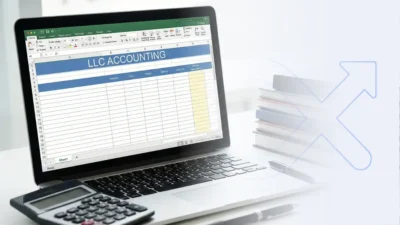
Starting from January 1, 2025, certain changes have been implemented in the Turnover Tax system, according to the Law of the Republic of Armenia “On Amendments to the Tax Code of the Republic of Armenia” adopted by the National Assembly of the Republic of Armenia.
The changes relate to taxation procedures, tax rates, as well as the process of documenting activities, the purpose of which is to reduce administrative costs, as well as a number of other reforms.
What is Turnover Tax and How is it Calculated?
Turnover tax is a state tax paid to the state budget, replacing VAT and/or profit tax. For resident commercial organizations, turnover tax replaces VAT and/or profit tax. For individual entrepreneurs, turnover tax replaces VAT.
This law introduces two fundamental changes: the tax rates have increased, but at the same time, the minimum payable tax rate has decreased. The second key change allows not only companies engaged in commercial activities but also companies engaged in other activities to deduct expenses related to their operations.
Need guidance on the new tax rates? Contact Alpha Accounting for expert support on turnover tax and related reforms.
Different turnover tax rates are applied to taxable transactions, depending on the type of income.
| Type of Income | Rate | Deduction Rate | Minimum Rate |
| 1. Income from commercial activities, with certain exceptions | 10% | 9.5% | 1% |
| 2. Income from the commercial (purchase and sale) of secondary raw materials | 5% | – | – |
| 3. Income from the alienation of newspapers by editorial offices | 15% | – | – |
| 4. Income from production activities | 7% | 5% | 3.5% |
| 5. Rental payments, interest, royalties | 10% | – | – |
| 6. Income from activities carried out in the public catering sector | 12% | 9% | 3.5% |
| 7. Income from the alienation of other assets, as well as income from other activities (Public catering sector) | 20% | – | – |
| 8. Income from types of activities included in the list of high-tech sector activities | 1% | – | – |
| 9. Income from the alienation of other assets, including real estate | 10% | – | – |
| 10. Income from other activities | 10% | 6% | 4.5% |
Key Points for Calculating Turnover Tax
- If, after the deductions established in category 1, the amount of turnover tax is less than 1% of the taxable base formed from commercial activities, the deduction for expenses is made to the extent that the amount of turnover tax becomes 1% of the taxable base formed from commercial activities.
- If, after the deductions established in category 4, the amount of turnover tax is less than 3% of the taxable base formed from production activities, the deduction for expenses is made to the extent that the amount of turnover tax becomes 3% of the taxable base formed from production activities.
- If, after the deductions established in category 6, the amount of turnover tax is less than 3.5% of the taxable base formed from activities carried out in the public catering sector, the deduction for expenses is made to the extent that the amount of turnover tax becomes 3.5% of the taxable base formed from activities carried out in the public catering sector.
- If, after the deductions established in category 10, the amount of turnover tax is less than 4.5% of the taxable base formed from the given activity, the deduction for expenses is made to the extent that the amount of turnover tax becomes 4.5% of the taxable base formed from other activities.
- If public catering activities are carried out outside the territory of Yerevan city, the provisions of this law will enter into force only after January 1, 2026, and until then, the regulations established by the Code in the version in force before the entry into force of this law will apply.
Deductible Expenses for Turnover Tax
Expenses deductible from the amount of turnover tax are considered to be documented expenses directly related to the production of goods, performance of work, and/or provision of services (with certain exceptions), the initial value of goods that are the subject of commercial (purchase and sale) activities, as well as administrative and sales expenses.
Another change in the Tax Code amendments is the transfer of taxation of a number of professional works and services to the general taxation system (VAT and profit tax) from July 1, 2025.
These sectors include: legal activities, accounting, head office activities, management consulting services, advertising activities and market 1 research, building construction, real estate transactions on a fee or contractual basis, architectural or engineering activities, technical testing and analysis, other professional and technical activities, temporary employment agency activities, and healthcare.
If you want to know how to calculate turnover tax and how to fill out the turnover tax report, contact us or Get a Quote.
Attention: This article is intended for general informational purposes only and refers solely to changes made in the tax system as of April 21, 2025. It does not include any changes made or planned after that date and is not exhaustive. For more detailed and comprehensive information, please contact us directly for professional consultation.





